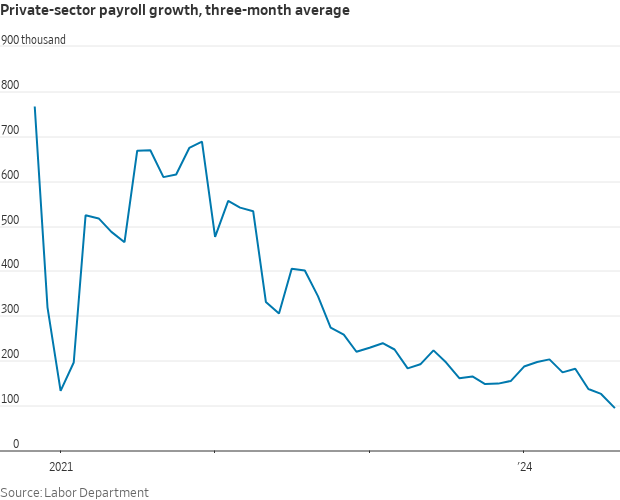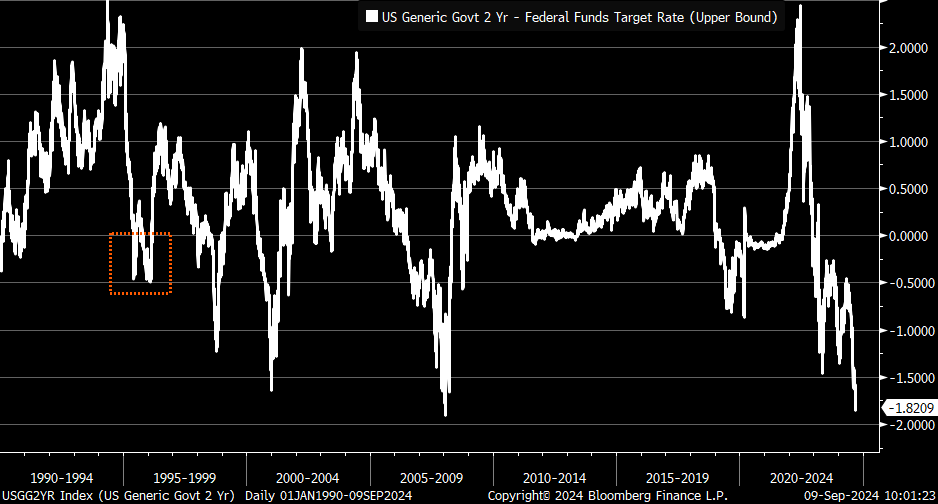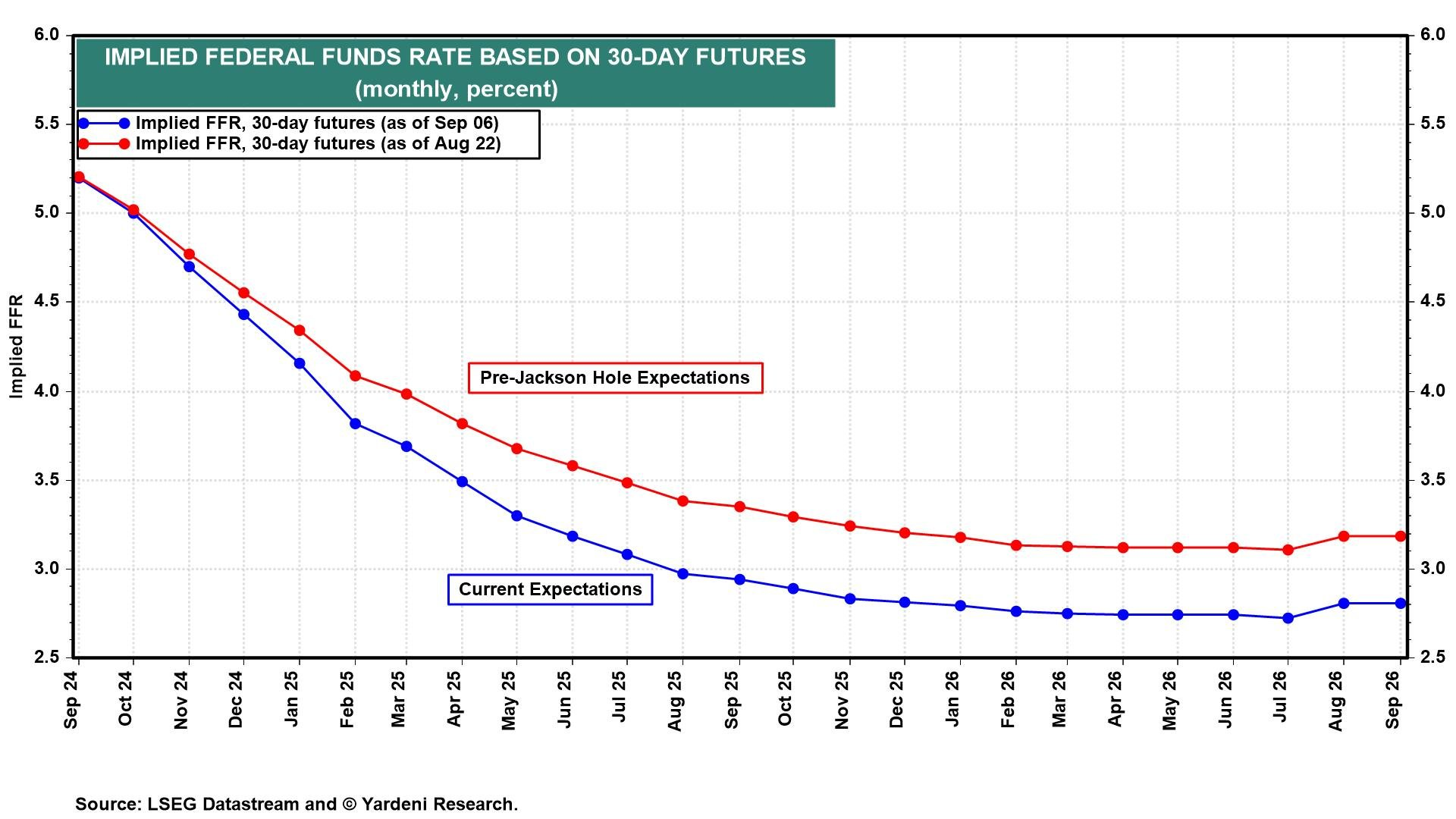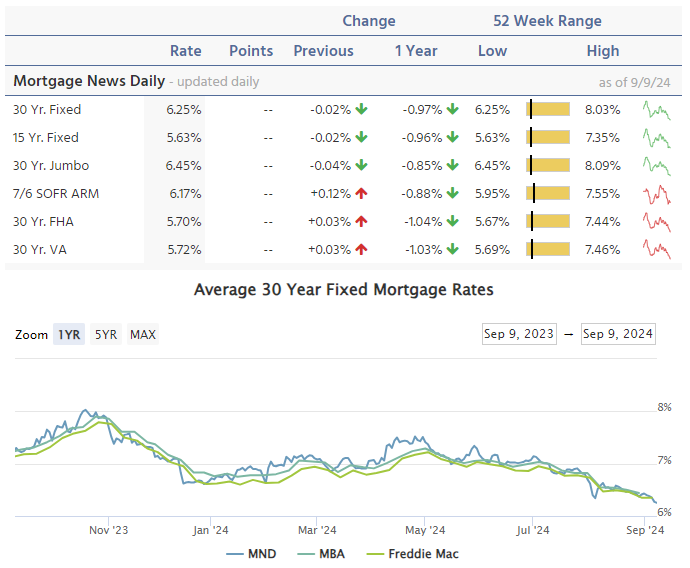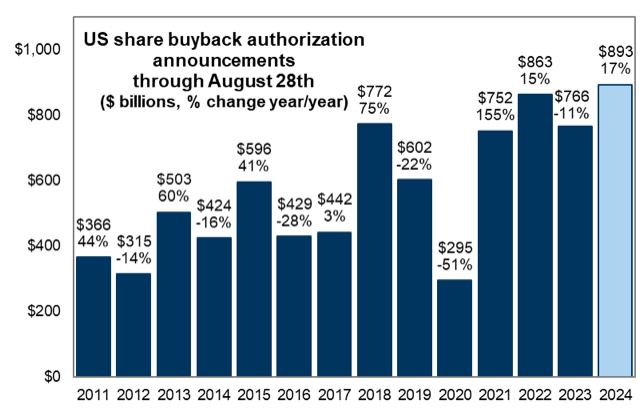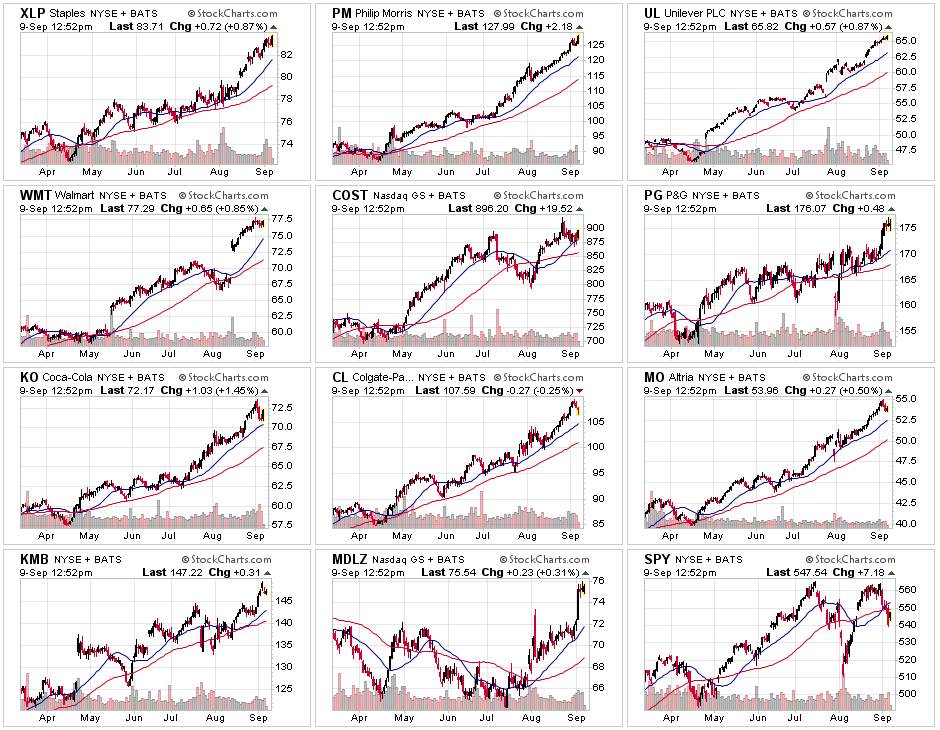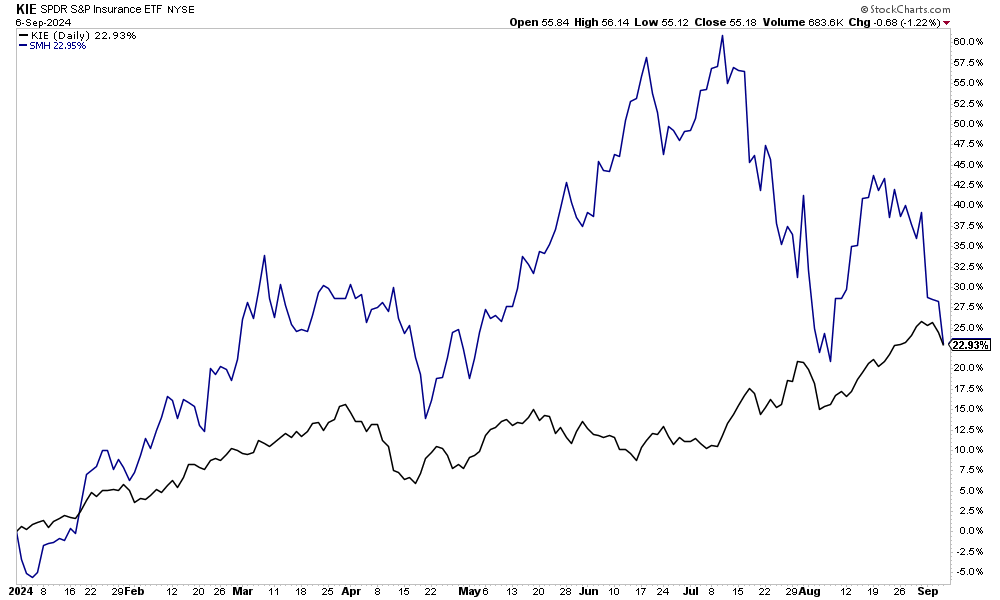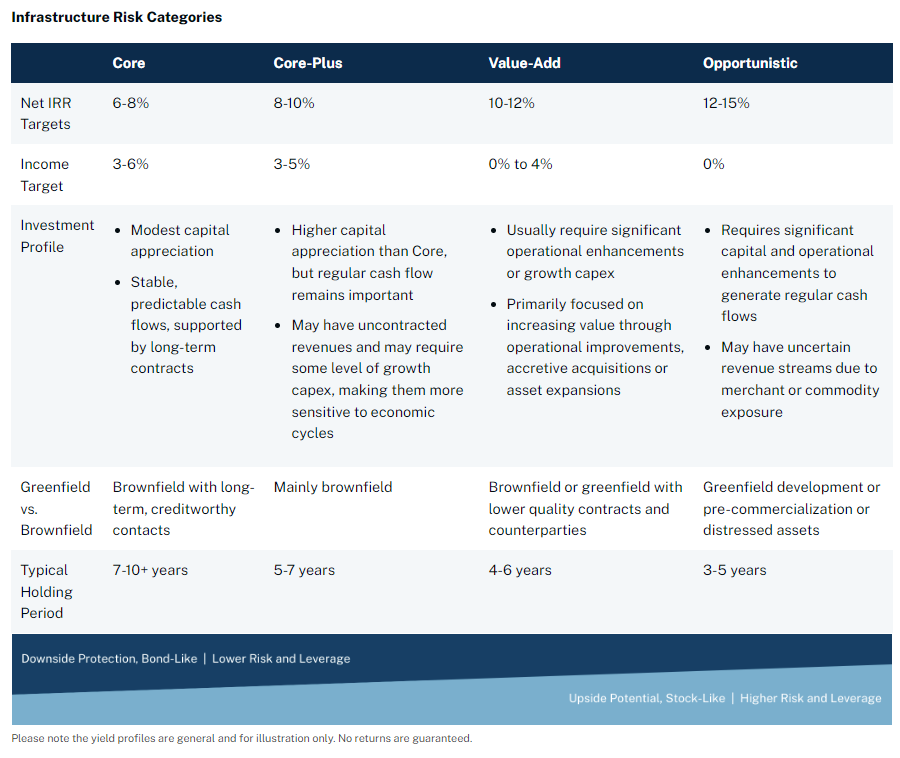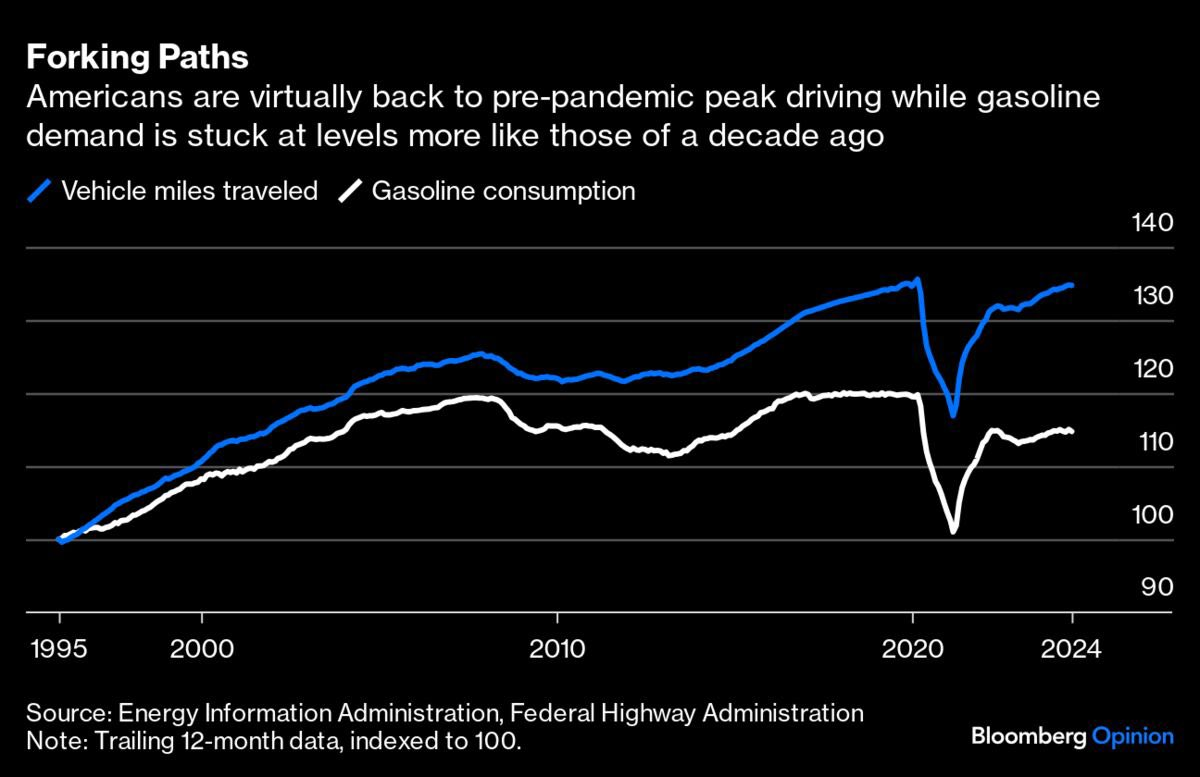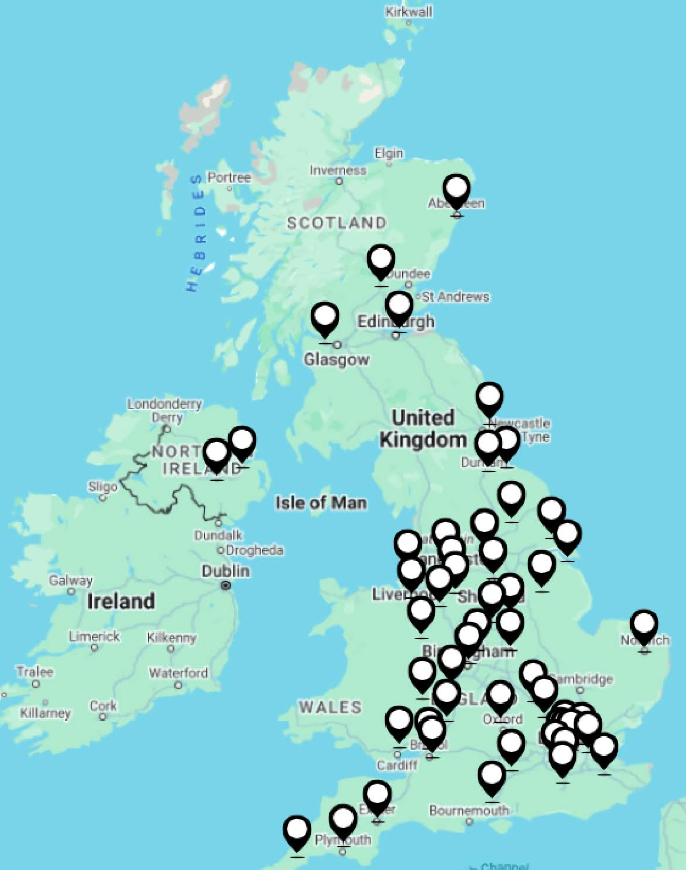
Weekly Research Briefing: The Road to Autumn Begins

September is always a tricky one for the markets as history tends to like to repeat itself. There is not one good reason as to why investors get cold feet during the ninth month. Maybe post-summer jitters? Or the fact that October might be a big fiscal year-end for institutional portfolios and portfolio managers are clearing out the losers early? Fantasy football distractions? Who knows the true answer, but this month has followed the playbook with stocks selling off while perma-bears return to the scene of the crime pounding their playbooks.
Should you be concerned? No. Look at the credit markets. They are rock solid even with a tidal wave of new issuance. Under the hood, you will find a credit market so favorable that Uber is issuing 30-year bonds at 5.35% and J.Crew is returning to the market for $450 million. Friday's jobs data showed the U.S. economy is growing more slowly. This will make the Fed lower rates at next week's FOMC meeting. A 0.25% cut will be the minimum, but plenty of room for them to cut 50 basis points given the continued collapse in inflation. Bond investors are expecting lower rates as the 10-year Treasury yield has fallen to 3.7% which is its lowest level in 16 months. Meanwhile, the yield curve has finally un-inverted without either a recession or a credit crisis.
This is a big investor conference week which should give us many updates on a large slice of publicly traded companies: Piper Growth, Barclays Financial, Goldman Sachs Communacopia, BofA Real Estate, Baird Healthcare, and Morgan Stanley Industrials to name a few. The CPI and PPI inflation readings will drop on Wednesday and Thursday. Expect more +0.2% month over month prints confirming that prices are quickly moderating. Enjoy the coffee, breakfast buffets and free pens if you are sitting in a large room this week. One pro-tip: Be sure to check out one of the least attended presentation meeting rooms for that undiscovered idea.
With inflation continuing to surprise lower and the job picture slipping, the Fed-speak is getting more and more dovish...
"I believe that the balance of risks has shifted toward the employment side of our dual mandate and that monetary policy needs to adjust accordingly."
"The data that we have received in the past three days indicates to me that the labor market is continuing to soften but not deteriorate, and this judgment is important to our upcoming decision on monetary policy...The jobs report for August, released this morning, supported the story of ongoing moderation in the labor market." - Federal Reserve Governor Christopher J. Waller
"It’s very clear what’s happening in the economy. Inflation is way down. We’re not overheating. And there are definite warning signs of things over-cooling...Do you want to be the most restrictive you’ve been in the entire rate-tightening cycle at a moment when there’s a pretty clear path to 2% inflation and the unemployment rate is above?" - Chicago Fed President Austan Goolsbee
“With the economy now in equipoise and inflation on a path to 2 percent, it is now appropriate to dial down the degree of restrictiveness in the stance of policy by reducing the target range for the federal funds rate. This is the natural next step in executing our strategy to achieve our dual mandate goals." - Federal Reserve Bank of New York President John Williams
The market is thinking 25bps next week and 100bps by year end...
If any FOMC member needs a chart to backup a 50 basis point cut next week, here you go...
@NickTimiraos: In July, the three-month average of private-sector hiring was 146,000. Today's report shows that figure was revised down to 126,000. And with the August number, private-sector hiring is now at 96,000, on average, over the last three months.
And here is a backup chart for a 50 basis point cut...
@RenMacLLC: The ratio of job openings to unemployment (V/U) declined to a fresh low of 1.071 in July, about where it was in April 2018. This is yet another sign that labor demand has cooled, going a bit beyond where we were just before the pandemic.
Canada has now cut rates three times since June...
Today, we lowered the policy interest rates by 25 basis points to 4.25%. This is the third consecutive decrease since June. Our decision reflects two main considerations. First, headline and core inflation have continued to ease as expected. Second, as inflation gets closer to target, we want to see economic growth pick up to absorb the slack in the economy so inflation returns sustainably to the 2% target. Inflation continues to reflect the push and pull of opposing forces. Overall weakness in the economy continues to pull inflation down. But price pressures in shelter and some other services are holding inflation up. Since the July Monetary Policy Report, the upward forces coming from prices for shelter and some other services have eased slightly. At the same time, the downward pressure coming from excess supply in the economy remains. If inflation continues to ease broadly in line with our July forecast, it is reasonable to expect further cuts in our policy rate. (Tiff Macklem, Governor of the Bank of Canada)
The U.S. Fed has plenty of room right now to cut the Fed Funds rate...
@KevRGordon: One thing not consistent with the 1995 soft landing is the spread between the 2y Treasury yield and the fed funds rate... in the mid-90s, it was around -50bps at the most extreme point; today, it's -181bps (only consistent with the GFC going back >30 years)
The yields on Money Market Funds could start with a "2" next year...
Say goodbye to your 4-5% low risk yields today. Better have a plan to take on risk if you want to keep the same income.
Many companies continue to look for (and applaud) falling interest rates...
"Interest rates coming down should facilitate stronger consumer demand across a range of applications, of vehicles being less expensive to buy, consumer borrowing being more readily available, corporate borrowing being more readily available. So we think that's bullish for demand overall." - GlobalFoundries CFO John Hollister
“We are encouraged that inflation hit its lowest post-pandemic level in July with the consumer price index cooling to 2.9%, setting up a possible interest rate cut in September...We believe that if the interest rates are lowered, housing activity will accelerate." - Hooker Furnishings CEO Jeremy Hoff
“When rates go down, it helps build confidence on the direction of where things are going to be over a longer period of time...If the market gets confidence and if customers get confidence that the trajectory we're on is going to create economic stimulus. That's the more important outcome from this." - Microchip CEO & President Ganesh Moorthy
Future U.S. homeowners are also applauding...
And with home equity levels back to sixty year highs, homeowners will have a new piggy bank to tap into if they need financial assistance...
There are two types of home equity loans. Fixed-rate loans function as a second mortgage with a lump sum being borrowed, a predetermined repayment schedule, and usually a fixed interest rate. And there are home equity lines of credit, or HELOCs, which act more like credit cards; they have variable interest rates and allow borrowing up to a set limit.
HELOC balances at banks shrank throughout the 2010s and even in the early 2020s as low mortgage rates incentivized full refinancings. Revolving home equity loans have been climbing by 1% or more, year over year, in recent weeks, indicating banks and borrowers are beginning to favor these products again.
This is particularly noteworthy since unlike regular mortgage rates that have already priced in a significant number of expected rate cuts by the Federal Reserve, HELOCs tend to be priced off the central bank’s policy rate. Should the Fed end up reducing its benchmark by 2 percentage points or more by the end of 2025, as markets currently expect, HELOC rates would fall substantially.
Costco's monthly comps are accelerating suggesting the consumer is healthy and spending...
Aiding the consumer: Gasoline futures prices now at the lowest levels since 2021...
And with the season summer demand over, the national average price should be below $3 in October.
Stocks flinched in September, but Credit looked straight through any financial market worries...
@GunjanJS: Not a ton of fear in the bond market after the S&P 500's worst week since March 2023. Investment-grade bond spreads inched up 3 bps. "The bull case for credit is that slower growth allows the Fed to lower rates aggressively ...but the economy doesn’t fall into recession"--JPM
Maybe stock investors were just front running a close of the September stock buyback window?
GS corporate blackout window begins on September 13th. YTD corporate authorizations are the largest on record @ $893 Billion. US corporates have been the largest buyer of the equity market and we expect their demand to drop by -35% during the closed window. This week is peak open-window for corporates.
Asked by no taxi driver or golf caddy: What is your favorite Staples stock pick?
Consumer Staples just had their best week of outperformance in four and a half years. But investors in the names know that they have been performing for most of 2024. Thank you falling inflation, a weaker US$ and the broadening out of stock performance beyond the Mag-7. Look at the breadth of performance in the names below.
Overheard by no one: "I am overweight Insurance stocks"...
@MikeZaccardi: YTD: Insurance +22.9% $KIE. Semiconductors +22.9% $SMH.
How was your publicly traded investment allocation positioned three years ago?
Congrats if maximum loaded into Energy, Semis and Gold. Did you think S&P 500 Value stocks would outperform the Nasdaq 100?
Time for Large Cap companies to begin to use their multiples and start buying six-packs of Small Cap companies?
Large caps have healthy multiples, clean balance sheets and borrowing markets on speed dial. Watch the number of companies in the Russell 2000 continue to shrink.
Now a look at some recent interesting M&A...
Verizon buys Russell 1000 and S&P 400 component Frontier for its fiber assets...
Verizon has agreed to buy US fibre internet provider Frontier Communications in an all-cash transaction valued at $20bn, as the telecoms company seeks to expand its network across the country to compete with rivals. The New York-based company said on Thursday the deal would “significantly expand Verizon’s fibre footprint across the nation” and help it provide fast broadband services to more customers. The move by Verizon, one of the three biggest US telecoms groups, comes as dealmaking heats up in the fibre market, with providers seeking to boost their high-speed broadband services. T-Mobile earlier this year announced joint ventures with private equity groups EQT and KKR to buy Lumos and Metronet respectively. Dallas-headquartered Frontier has 2.2mn fibre subscribers in 25 states while Verizon has approximately 7.4mn connections in nine states and Washington DC. (Financial Times)
Russell 2000 software company gets a raised offer to go private...
SQSP amends merger agreement with Permira to increased offer of $46.50/shr (~36% premium over 90-day VWAP), with new value $7.2B (prior $6.9B) - Stockholders will receive an increase of $2.50 per share in the amended transaction.- Purchase price is $46.50 per share, reflecting a 36% premium over the 90-day volume weighted average price of $34.09 as of May 10, 2024. - The transaction value is approximately $7.2B (prior $6.9B). The transaction also represents over 20x enterprise value / 2025 unlevered free cash flow, representing a significant premium to peers.- The revised offer represents a 5.7% increase over the previous $44.00 offer and a 21.8% premium over the 52-week high of $38.19. (TradeTheNews)
Netherlands based OCI ($6.6b mkt cap) exits the methanol business with a sale to $2.8b market cap Methanex...
OCI NV Agrees to sell global methanol business for $2.05B to Methanex Corp Has entered into a binding equity purchase agreement for the sale of 100% of its equity interests in its Global Methanol Business ("OCI Methanol") to Methanex Corporation ("Methanex"), (the "Transaction").Purchase price consideration of USD 2.05 billion on a cash-free and debt-free basis ("Enterprise Value" or "Transaction Consideration") following a competitive process. (TradeTheNews)
Public mega-cap buys in one of its private vendors...
Salesforce confirms to have signed definitive agreement to acquire data protection and data management solutions firm Own Company for $1.9B cash. Has signed a definitive agreement to acquire Own Company, a leading provider of data protection and data management solutions. Own empowers organizations to ensure the availability, security, and compliance of mission-critical data, while unlocking new ways to gain deeper insights from this data. (TradeTheNews)
So how much do you know about infrastructure investing?
If you or your clients are new to infrastructure, our team has put together a great piece to introduce this newer asset class that we will all be hearing much more about going forward. And infrastructure investing doesn't just mean the potential for long duration assets with high yields. There can also be opportunities to invest in infrastructure deals that are closer to early development of the asset and generally have much higher risk and historically had better return opportunities. Something for everyone. Click below to learn more.
What Is Infrastructure Investing?
Infrastructure provides essential services whose value is derived from their utility. Infrastructure investing is a real assets investment strategy to finance the construction, purchase or upgrade of assets that help distribute people, goods and resources across global economies.
While infrastructure shares some traits with real estate, such as investment in physical, often permanent structures, it has distinct attributes and is a separate sector within real assets. Key transactional sectors in infrastructure include economic infrastructure like: power, energy, data/communication, transportation and logistics, environmental services, water and waste management, and, to a lesser extent for private investment, social infrastructure.
Infrastructure investments generally seek to provide steady returns across a wide variety of economic conditions, often through long-term contracted cash flows, typically offering total returns that include both capital appreciation and income.
Peak gasoline, not peak driving as American's shift to electric vehicles...
“On any reasonable view, US gasoline demand, accounting for one in every 12 barrels of oil consumed worldwide, has peaked.” -@liamdenning
(@conorsen)
Speaking of EV, Berkshire Hathaway's automobile company has taken over the United Kingdom...
The U.S. government and auto dealers can try and fight it, but as this map of BYD dealerships in the U.K. shows, eventually the consumer will make the final decision. Expect a major partnership and distribution deal with one of the major auto companies.
(@TommyThorton)
Exceptional students created by incredibly motivating teachers...
What a moving story by 60 Minutes on this role model school in New Orleans.
This week, 60 Minutes reported on St. Mary's Academy, a Catholic school for young Black women in New Orleans, Louisiana.
Correspondent Bill Whitaker met two former students, Calcea Johnson and Ne'Kiya Jackson, who made math history when they both independently proved the 2,000-year-old Pythagorean Theorem using trigonometry, an achievement that was once thought to be impossible.
Whitaker asked St. Mary's Academy principal Pamela Rogers if she was shocked when she learned what the girls had achieved.
"We were not shocked…our students can do anything. And that's what we tell them. You know, 'The sky is the limit, and we want to be up there with you,'" she told 60 Minutes.
Learn more about the Hamilton Lane Strategies
DISCLOSURES
The author has current equity ownership in: Costco Wholesale Corp. and Coca-Cola Co.
The information presented here is for informational purposes only, and this document is not to be construed as an offer to sell, or the solicitation of an offer to buy, securities. Some investments are not suitable for all investors, and there can be no assurance that any investment strategy will be successful. The hyperlinks included in this message provide direct access to other Internet resources, including Web sites. While we believe this information to be from reliable sources, Hamilton Lane is not responsible for the accuracy or content of information contained in these sites. Although we make every effort to ensure these links are accurate, up to date and relevant, we cannot take responsibility for pages maintained by external providers. The views expressed by these external providers on their own Web pages or on external sites they link to are not necessarily those of Hamilton Lane.

